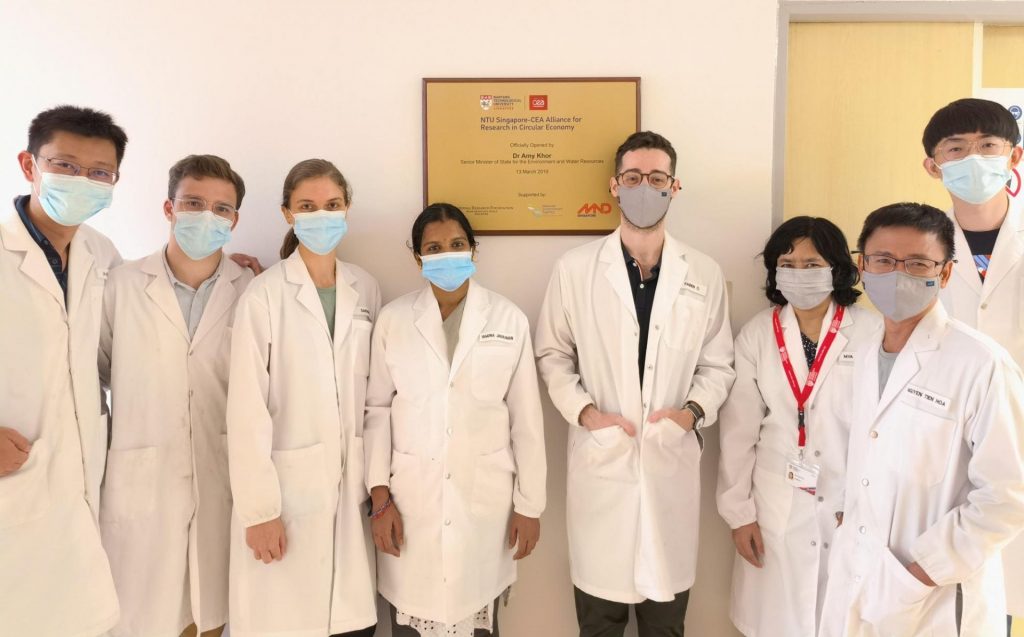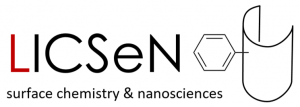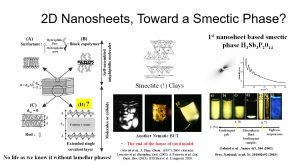Research
The group’s current fields of interest are the following:
- Nanomaterials: In our laboratory, we synthesize and characterize low dimensionality materials (0, 1 and 2D), by all means necessary and available. These materials can often be exfoliated/dispersed in solution leading to some complex/colloidal fluids, exhibiting a very wide range of fascinating behaviors. In 2001, we discovered the first lamellar phase based on extended 2D nanosheets, and further confirmed it recently.
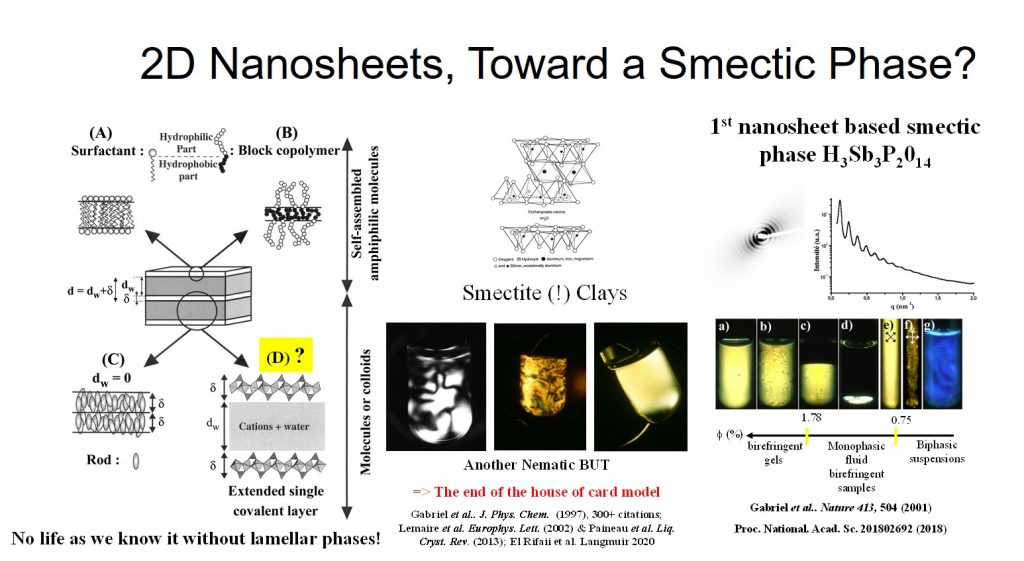
- Waste recycling: we are developing tools and processes for impoving various wastes recycling to enable more economically viable waste processing. Our efforts in this field started in 2013 and focussed at the time on an integrated microfluidic lab-on-chip that enables much faster exploration of multidimensional phase diagrams of complex fluids. Such lab-on-chip devices integrate various sensors as well as characterizations methods (such as FTIR in hollow waveguides, or X-ray fluorescence). This work was first funded, from 2013 util 2018, by the advanced ERC project REE-CYCLE that aimed at developing new rare earth extraction/recycling processes, at least 10 times more efficient that current liquid-liquid extraction processes, where JCG served as acting co-PI. Since then, thanks to: (i) the NEA endowment to the joint CEA / NTU laboratory SCARCE (phase 1 2018-2023 and phase 2: 2023-2028); (ii) in 2023 funding from the French PEPR Recyclage program financed by the FRANCE 2030 (coordination of project REVIWEEE, and task leader in project CYCLAMET and PLASTICS), and; (iii) industrial contracts with ECOLOGIC France as well as Continental, we are further developping the microfluidic platform as well as expanding our effort to other process steps in the recycling of e-waste (PCBs, plastics from e-wastes), such has:
- PCBs dismantling and associated electronic component sorting;
- Physical method based purification;
- Critical metals recovery and purification;
- Liquid-liquid and Solid-liquid hydrometallurgical recovery processes step development;
- Use of supercritical fluid as a green solvent for e-waste recycling.
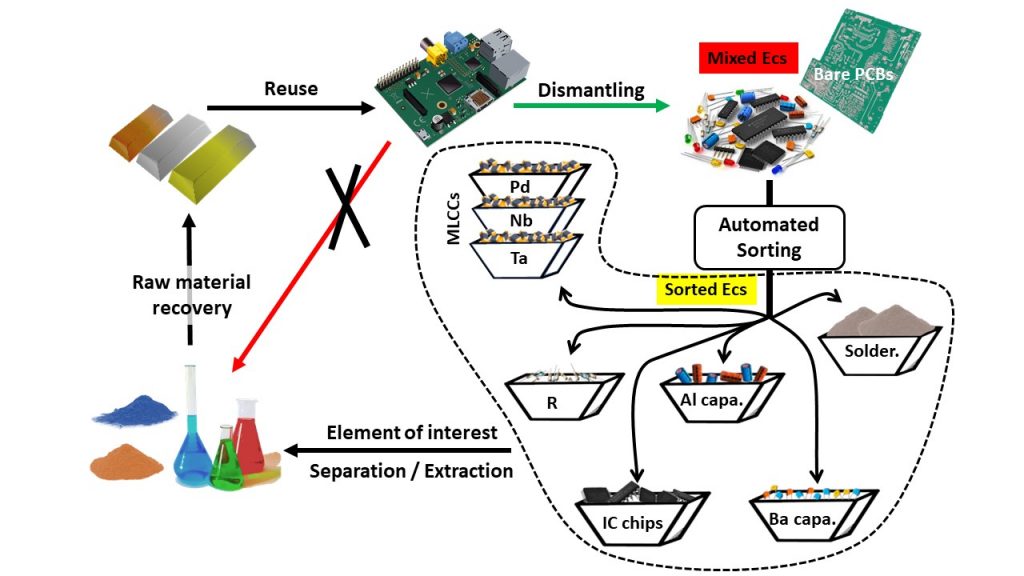
- Integration:
- Thanks to the awarded ANR Project 4WATER (2018): we are elaborating new and cheap multi-target chemical sensor arrays for the continuous monitoring of groundwater quality. Using a microelectronic approach, the sensors will be based on functionalized nanomaterials and that will target various ions selected for their relevance as regards the quality of fresh water.
- Thanks to the awarded ANR Project 2D-MEMBA (2021): we integrate nanomaterials for the making of less power-hungry membranes for the purification of water.
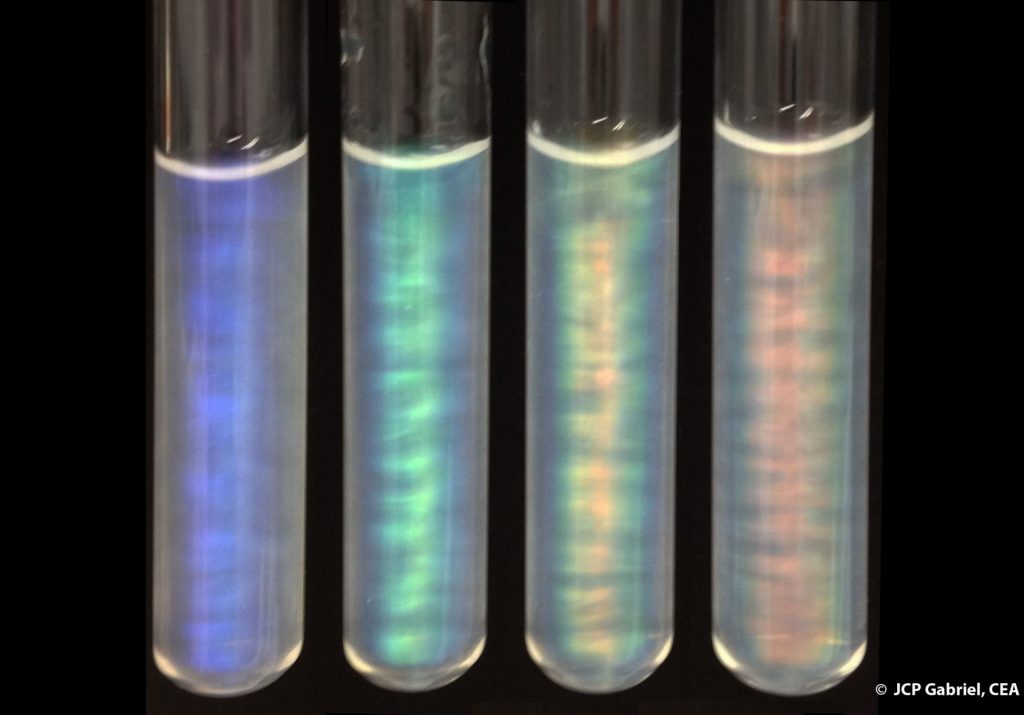
Group members in both CEA and NTU:
Leader: Dr. HDR. Jean-Christophe P. Gabriel, Invited Professor @ NTUPostdocs,
Permanent Researcher:
- Dr. Guillame Zante: since 11/2023;
Research Fellows or Senior Research fellow:
- Dr. Xia Dong (NTU), RF (2018-2023); SRF since 08/2023;
- Dr. Han Bo (NTU), RF since 2021;
- Dr. Pallab Das (NTU), RF with SCARCE since 2021, in the group since 09/2023;
- Dr. Koh Kok Yuen (NTU), RF since 09/2023;
- Dr. Nikita Paul (NTU), RF since 12/2023
PhD students:
- Thibault Rosier (12/2023-11/2026): “Recyclage de métaux critiques perdus et issus de cartes de circuits imprimés usagés.” Thèse CIFRE avec ECOLOGIC France;
- Gwénael Dupuis (11/2023-10/2026): “Microfluidic development for the analytical study of biohydrometalurgy processes for the recycling of critical metals ;
- Emilie Rolland (11/2024-10/2027): “New membranes based on 2D materials”;
- Qiqi Sun (2024-2027), in NTU, co-direction with Prof. Tan Lay Poh: “Supercritical CO2 of biomolecules from food waste”
Research Assistant (NTU):
- Currently Hiring;
V.I.A. CEA:
- Louis Langlais (NTU): 07/2024-present
Interns: Looking for some, see below
Job openings (tenured or not):
We are currently hiring one research fellows (postdocs) and research assistants in CEA/NTU SCARCE joint laboratory in Singapore. Look Here for more details and to apply (N.B. due to visa restrictions, local applicants are strongly encouraged).
NIMBE being a joint unit with CNRS, the group can be host of CNRS permanent/tenured researchers (commission 14 or 15 in the case of this group), either by mobility or via the yearly contest: see here for more details.
NB: There are also yearly funding opportunities for French University Professors to spend a sabbatical in the group. Feel free to contact JC Gabriel.
Former group members (Since 2013):
Visiting Scientists and Professors
- Prof. Ing. Andrea Miškufová, Ph.D., 05-06/2023
Postdocs or Research Fellows:
- Dr. Jayaraman Yamuna (NTU), 2021-04/2023; now with ThermoFisher
- Dr. Mya Mya Khin (NTU), 2021-02/2023, now in NUS Singapore.
- Dr. Tien Hoa Nguyen (NTU), 2020 – 08/2022, Now in NTU Prof. Hu Xiao‘s group
- Dr. Varun Rai (NTU 2020-2021) now researcher at NUS Singapore
- Dr. Daobin Liu (NTU 2020-2021) now JSPS Postdoc Fellow (Institute of Solid State Physics)
- Dr. Junhua Xu (NTU 2020-2021) now Ass. Prof at Fujian Institute of Research on the Structure of Matter, Chinese Academy of Sciences
- Dr. Fang Wei (NTU 2019-2020): now Ass. Professor, School of Materials Science and Chemical Engineering, Ningbo University, China
- Dr. Ange A. Maurice (NTU) 11/2018-02/2021 Now at Department of Thermal and Fluids Engineering, Madrid University Carlos III
- Dr Johannes Theisen (CEA 2014-2018), now R&D system manager with Biomérieux.
V.I.A./V.I.E.
- Estelle Brière (NTU): 06/2023 – 05/2024; now Consultant at Oresys
- Sarah Chevrier (NTU): 01/2021-07/2022; now with Air Liquide (since 05/2023)
Research Assistants
- Colin Locoge (NTU): 08/2023_07/2024
- Théophile Dassonneville (NTU): 08/2023 – 02/2024;
- Dr. Nicolas Charpentier (2022-12/2023); now with European Synchrotron Radiation Facility (ESRF) (since 03/2023)
PhD Students
- Sarah Chevrier (08/2022-04/2024): “New membranes based on 2D materials”; now with Air Liquide (since 05/2023)
- Dr. Nicolas Charpentier (2023-01/2024): “Recyclage de déchets électroniques : tri et réutilisation”; now with European Synchrotron Radiation Facility (ESRF) (since 03/2023);
- Dr. Yuemin Deng (2020-10/2023): Recycling of ewaste using Sc-CO2; now with ECOLOGIC France (since 11/2023)
- Dr. Fabien Olivier (10/2020-09/2023, joint supervision with Prof. Charles Yang Chun from NTU): “Processes development using a microfluidic platform”. Now with ERAMET since 07/2023.
- Dr. Lina Cherni (10/2019-01/2023): Exfoliation of 2D materials and their applications; now R&D and Innovation Funding Consultant at Elyas Conseil.
- Dr. Christophe Penisson (10/2015 – 09/2018), (i) Research Engineer at CNRS (2021-2023); (ii) now Ingénieur R&D Essais at HYDROQUEST (since 04/2023)
- Dr. Nawres Sridi (2010-2013), now at SAGEM
Interns
- Dr. Carmen Lee, (NTU) 08/2023-01/2024; Now Assistant Manager at Maritime and Port Authority of Singapore (MPA);
- Thibault Rosier (3rd year Student at CentraleSupelec, 03-09/2023);
- Paloma F. (9th grade internship, 2023, 1 week)
- Sébastien Paloc (1st year Magistère internship, ENS Paris Saclay, 06-07/2022)
- Alexandre Stawiarski (3rd year Engineering school internship, 2021), now Engineer at Mines ParisTech
- Kassandra Ojeil (3rd year Engineering school internship, 2021). Now VIE at Capgemini
- Dr. Asmae El Maangar (3rd year Engineering school internship, 02-07/2018): now Research group leader at Saint Gobain, France
- Gabriel Bernard (3rd year Engineering school internship, 2017). Now at SICK Sensor Intelligence
- Alistair Gabriel (9th grade internship, 2017) Student at ISEP
- Lucas Hummel (9th grade internship, 2017)
- Brice Gay (9th grade internship, 2016)
- Pan Zhou (3rd year ENSIC Engineering school internship, 2016). Now Research Engineer at EDF China, Beijing, China.
- Fatima-Ezzahra Hami (3rd year ENSIC Engineering school internship, 2016), now Welding Engineer at IWE, France.
- Marine Le Meur (Master Alternance, 2015-2016), now Back-End Quality Engineer at STMicroelectronique
- Dr. Nicolas Gauthier (Magistère internship, 2014), now at CEA after a Ph. D. with SAFT. Now Research Scientist at CEA.
